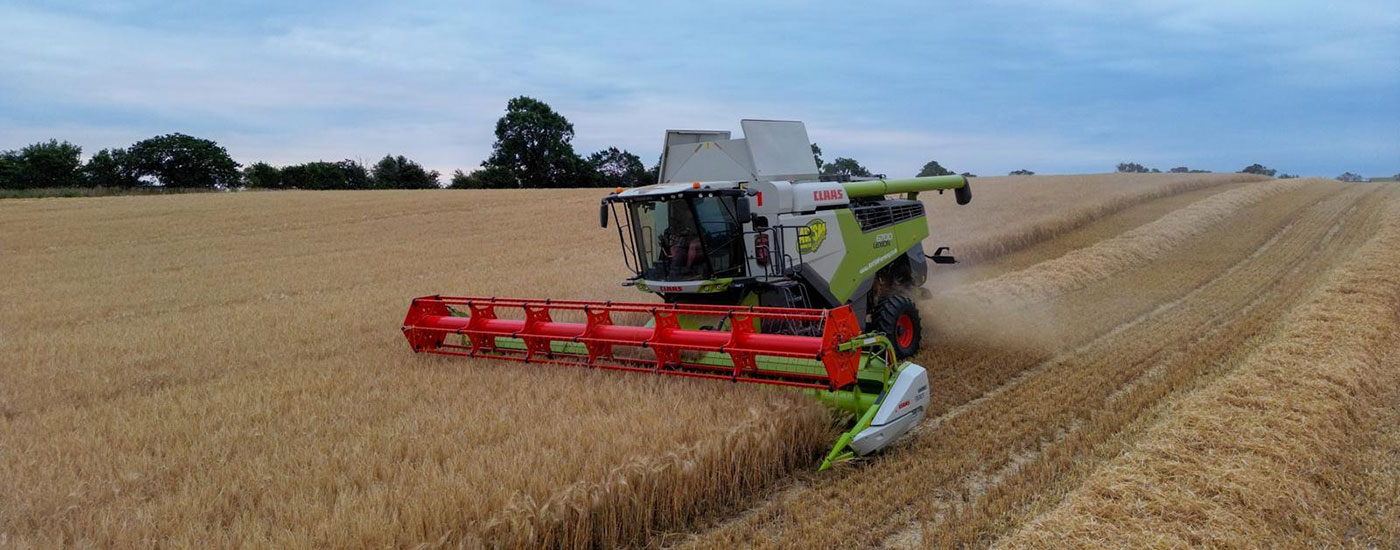Once a combine harvester separates the grain from the stalks or chaff, the grain is collected into a trailer and then transported to a store. Typically the trailer will be pulled by a tractor and often pulled alongside the combine harvester when collecting the grain to reduce the need for additional collection.
Combining
Send us a message

What is Combining?
Modern methods of combining require the use of a combine or a combine harvester. These combining machines have been designed to efficiently harvest a range of grain crops. The name is derived from the way in which the process combines three individual harvest operations. Reaping, threshing, and winnowing are all combined into the one process, in order to simplify the overall operation.
Our Combining & Grain Transport
At AWSM, our agricultural service offering currently boasts three 25 ft Cut Combines, which are all fitted with GPS auto-steering. This assists with ensuring that the combines always make field breaks, leaving a full headers width. Our agricultural services include yield mapping that offers our customers the ability to analyse areas of a field that are not reaching their full potential.
Our harvest smart feed rate controls are fitted to ensure that our combine machinery automatically manages and adjusts speeds according to the loss monitors and variations in crop yield. This system aims to reassure our customers that our combined capabilities will always run at an optimum level and ensure that there is no loss in yield, preventing valuable grains falling from the back of the machinery.
Our agricultural services include the use of several grain trailers, available to transport your crops and grain from field to store. We offer the capability to supply our customers with a full tow and tractor or a tow to use in combinator with our customers own farming machinery, with full operative availability from our team.
AWSM operates a 16-tonne chaser bin towed by one of our tractors, on floatation tires, offering the capability to lead off from the combines to a wagon nearby, ready to transport the grain to a silo or store. This agricultural service is considered to be the most cost-efficient method of transportation, with the wagon capable of transporting around three times more grain per trip, compared to a standard tractor. Furthermore, where longer distances need to be covered, the wagon is considerably quicker on the road than the tractor method.
Our additional agricultural service offering includes increasing combine capability, which ensures a crop is harvested in the correct conditions and can ensure that combining is efficiently and swiftly collected, during periods of bad weather.
Economical Agricultural Services
We price individual jobs to ensure that they are the most economically sound option for the individual customer. We can offer fixed prices per acre when it comes to combining and swathing agricultural services. Our pre-priced methods ensure that our customers do not end up faced with a surprisingly high bill, once the agricultural service has been completed.
How does a combine harvester work?
The inner workings of a combine harvester are complex, but the basic process involves gathering the cereal crops in the front and separating the grains from their stalks through a threshing drum. The grains are then collected into a tank (or a trailer that’s pulled alongside the combine harvester), and the unwanted stalks are dispensed out the back of the machine.
How tall is a combine harvester?
Combine harvesters come in various sizes, with the largest ones available today running headers up to 60 feet, or 18m, though widths of 11-13 feet, or 3-4m, are much more common. The height of a combine harvester is rarely under 11 feet, reflecting the need and operating function of the harvester.





